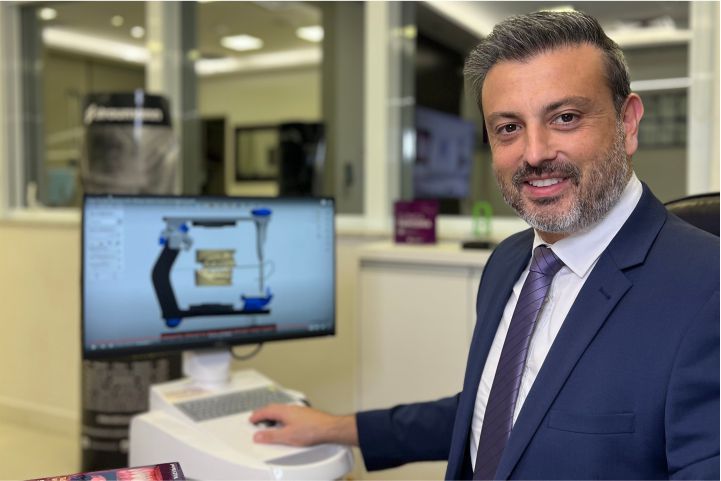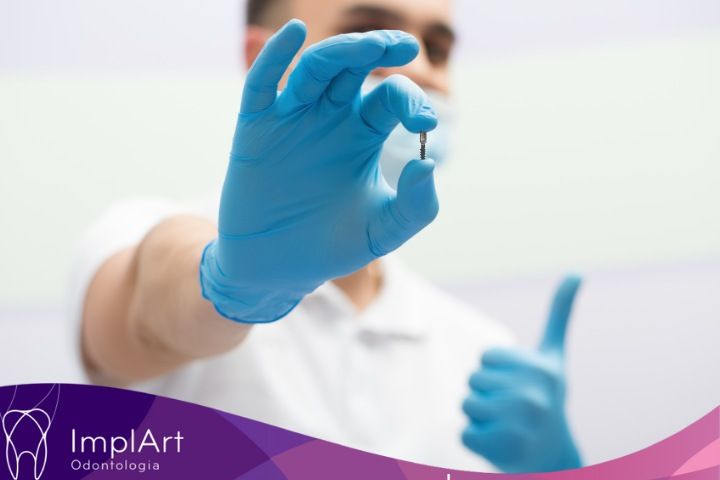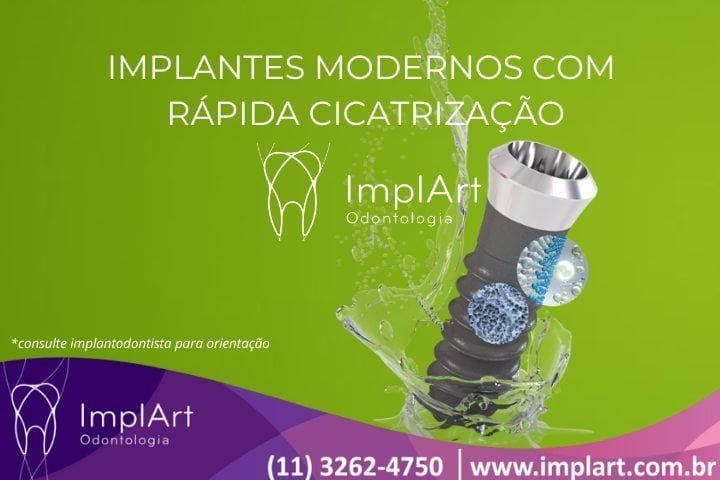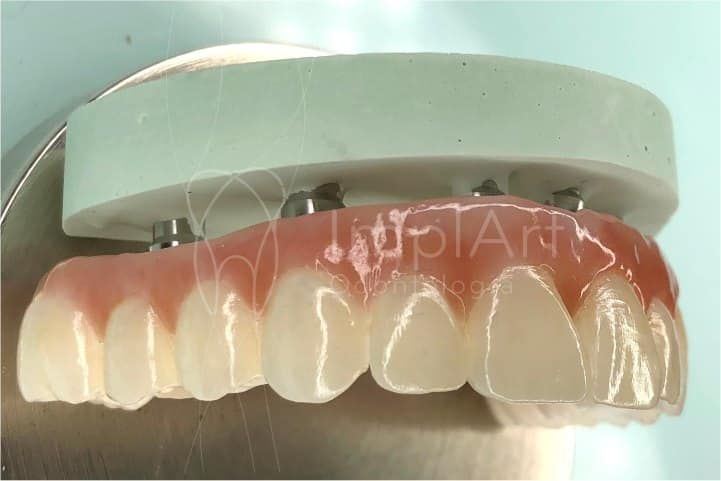Dr Roberto Markarian – Implant Dentist and Dental Implant Specialist
Dr. Roberto Markarian, PhD CRO-SP 73583 (Technical Manager)
Knowledge, updating, experience, seriousness and transparency
Practice at Clinica Dentaria ImplArt
Meet Dr Roberto Markarian, implant dentist, creator and director of the ImplArt Dental Clinic. The ImplArt Dental Clinic is certainly one of the main centers of technology in aesthetic oral rehabilitation and implantology in Brazil. As a result of its know-how and high technology, the ImplArt dental clinic receives patients from all over the world who are looking for high technology and knowledge to carry out their dental implant treatment.
Clinical History
Our clinical director holds a doctorate in implant dentistry, a master’s degree in prosthodontics, and two specializations in dental implants and prosthodontics. In addition, he has completed several training courses in the field of dentistry, not only in Brazil, but also abroad.
He also actively participates in the sector’s main congresses and fairs, both national and international. He is a member of important institutions in dentistry and related fields, such as the ITI – International Team for Implantology, the ADA – American Dental Association, and the EAO – European Association for Osseointegration.
Dr. Roberto Markarian is enthusiastic and knowledgeable about the most advanced technologies applied to digital dentistry, such as computerized CAD/CAM systems, high-performance and aesthetic ceramics, state-of-the-art dental implants, 3D dental printers, as well as digital scanners for computerized molding. For this reason, since 2011 the Clinic has had computerized scanners and machines in its in-house laboratory to meet patient demand.
Dr. Roberto Markarian is always striving to keep the ImplArt Clinic up to date and in line with the latest developments in world dentistry. He believes above all in teamwork and is particularly concerned about the quality of treatments, especially patient satisfaction.
In the case of patients who have already had a dental implant and wish to have a new prosthesis, in the vast majority of cases we are able to identify the type of implant by evaluating the panoramic radiograph. This is due to the expertise of our clinical director, implant dentist Dr. Roberto Markarian.
Scientific History Dr. Roberto Markarian
Dr. Roberto Markarian graduated as a dental surgeon in 2001 from the USP School of Dentistry in São Paulo. While still a student, he carried out research into improving dental materials, particularly in the areas of dentistry, prosthodontics and implantology. As a result of this work, he received 5 awards in Brazil. He described his results in more than 30 scientific articles, which were later published in international journals.
In the meantime, he has taken postgraduate courses in prosthetics and dental implants and has become a researcher and assistant to the fixed prosthetics team at USP (São Paulo) and at the São Leopoldo Mandic College (Campinas), as well as teaching college students and dentists.
In the area of academic research, Dr. Roberto Markarian has been conducting courses and research in the area of implant dentistry since 1998, and in the area of digital dentistry since 2004. He also gives lectures and training courses on modern digital dentistry tools.
Clinical coordination and planning – Summary of academic titles
- Post-Doctorate in Implant Dentistry – Univ SL Mandic (Campinas-SP) – 2020
- PhD in Implant Dentistry – Doctor of Implant Dentistry, Univ SL Mandic – 2017
- Dr. Roberto Markarian Specialist in Dental Implants at USP (Implant Dentist) – 2008
- Specialist in Prosthodontics (Prosthodontist ) by the CFO – 2006
- Master in Prosthodontics, USP – 2005
- Graduated as a Dental Surgeon from USP (São Paulo) – 2001
- Member of the Clinical Staff of Hospital Alemão Oswaldo Cruz
- Clinical experience of more than 10,000 dental implants installed, thousands of dental reconstructions and complex case resolutions.
- Accredited for the Straumann dental implant system, Switzerland – FUNDECTO USP – 2002
- Accredited for the Ceraroot zirconia implant system, Spain – 2010
- Clinical Research in Implant Dentistry at Harvard University, Boston, USA – 2011
- CAD/CAM system training course Cerec Sirona, Germany – 2014
- Member Academy of Osseointegration – AO (USA) – 2006
- Member of the American Dental Association – ADA (USA) – 2011
- He is a member of the ITI – International Team for Implantology, Switzerland – 2012
- Member EAO – European Association for Osseointegration, Europe – 2017
- Postgraduate in Advanced Oral Surgery for Implant Dentistry, APCD – 2003
- Acting as a Judicial Technical Expert in the areas of Dentistry as well asAssistant Implantology
- More than 30 scientific articles published in national and international journals
- Technical consultant for the EsteticArt CAD/CAM computerized prosthetics laboratory in São Paulo
- Ambassador of the company S.I.N. Implant System – Research and development of solutions in Digital Implant Dentistry (guideddental implants and computerized prostheses)

Dr. Markarian’s Postdoctoral Research in Implant Dentistry
Title: Dental implant-abutment fracture resistance and wear induced by single-unit screw-retained CAD components after mechanical cycling, fabricated by four CAM methods, Univ SL Mandic – 2020.
Supervisor: Prof. Dr. Fabiana Mantovani Gomes França. There was an international scientific publication resulting from this work in JPD (Journal of Prosthetic Dentistry) 2021 (USA).
Dr. Roberto Markarian’s Doctoral Thesis in Implant Dentistry (PhD)
Title: SEM analysis of the adaptation of screw-retained unitary abutments fabricated by four CAD/CAM methods after mechanical cycling, Univ SL Mandic – 2017.
Advisor: Prof. Dr. Fabiana Mantovani Gomes França. There was an international scientific publication resulting from this work at IJOMI 2017 (USA).
Master’s Thesis in Prosthodontics (MSc)
Title: Biomechanics of force transmission to single implants as a function of prosthetic crown stiffness: photoelastic and dynamic analysis – USP School of Dentistry – 2005.
Advisor: Prof. Dr. Claudio Luiz Sendyk (FOUSP)
Dental Implants Specialization Monograph
Title: Evaluation of the All-on-4 (All-on-Four) technique for the installation of fixed prostheses on four implants with immediate loading – graftless technique for atrophied maxillae, USP School of Dentistry – 2008
Advisor: Prof. Dr. Francisco Fernando Todescan (FOUSP)

Congress Awards and Scholarships
- 1st Place in Group C5 of Panels at the 22nd Annual Meeting of the SBPqO-Pc179, Brazilian Society of Dental Research (2005).
- 1st Place in Scientific Panel, XXVI CUBO – Brazilian University Congress of Dentistry (2001).
- 2nd Place – Oral Presentation, XXVI CUBO – Brazilian University Congress of Dentistry (2001).
- Scholarship – Removable Prosthesis, FOUSP (2001).
- 4th Place – Oral Presentation – Honorable Mention, XXIV CUBO – Brazilian University Congress of Dentistry (2000).
- 2nd Place – XXV de Janeiro Award for Encouraging Scientific Initiation, Academic Center XXV de Janeiro (2000).
- Scholarship – Restorative Dentistry II, FOUSP (2000).
- FUNDECTO Fellow – Scientific Initiation, FUNDECTO (1999).
- Alternate student representative on the Dental Materials Department, FOUSP (1999).
- Fellow PIBIC CNPq – Scientific Initiation, CNPq (1998).
Published articles and some scientific work by Dr. Roberto Markarian
MARKARIAN RA, GALLES DP, FRANÇA FBG. Dental implant-abutment fracture resistance and wear induced by single-unit screw-retained CAD components after mechanical cycling, fabricated by four CAM methods. Journal of Prosthetic Dentistry, 2021.
MARKARIAN RA, GALLES DP, FRANÇA FBG. SEM analysis of the adaptation of single-unit screw-retained CAD/CAM abutments after mechanical cycling. International Journal of Oral & Maxillofacial Implants 2018.
Evaluation of the marginal adaptation of single zirconia abutments customized by the CAD/CAM system: laboratory study. R MARKARIAN, EMF and Silva, R Manfro. Implant News 10 (3), 363-367, 2013.
MARKARIAN, Roberto Adrian . New materials for implant dentistry and the choice of rehabilitation material. Implant News Perio News magazine, internet, Feb. 24, 2012.
MARKARIAN R.A., UEDA C., LAGANÁ D.C., SOUSA R.M., SENDYK C.L. Stress distribution after installation of fixed frameworks with marginal gaps over angled and parallel implants. Journal of Prosthodontics, v. 16, n. 2, p.117-122, 2007.
LOPES F.M., SENDYK C.L., DUARTE C.P., MARKARIAN R.A., ARANA-CHAVEZ V.E. Swine teeth as potential substitutes for in vitro studies in tooth adhesion: A SEM observation. Archives of Oral Biology, v. 51, p.548-551, 2006.
ADDED, N. ; RIZZUTTO, M. A. ; CURADO J ; FRANCCI CE ; MARKARIAN, RA ; MORI, M. . Trace elementary concentration in enamel after dental bleaching using HI-ERDA. Nuclear Instruments and Methods in Physics Research (Print) (Ceased 1983. Disbanded in 2: ISSN 0168-9002 Nuclear iInstruments & Methods in Physic, v. 249, p. 684-687, 2006.
FALLA-SOTELO FO, RIZZUTTO MA, TABACKNICKS MH, ADDED N, BARBOSA MDL,MARKARIAN RA, QUINELATO A, MORI M, YOUSSEF M. Analysis and discussion of trace elements in teeth of different animal species. Brazilian Journal of Physics, v. 35, n. 3B, p.761-762, 2005.
BARCELOS DP, MARKARIAN RA, PINTO EG, CHELLOTTI A, HADDAD AE. Evaluation of the applicability of Carrea analysis in deciduous dentition Rev Ib-Am Odontopediatr Odontol Bebê, v. 8, n. 41, p.62-66, 2005.
MARKARIAN RA, LIMA RG, SOUSA RM, SENDYK CLTitle: The influence of the prosthetic materials on load transfer to dental implants. Technology Meets Surgery 2005, CD-ROM
UEDA C, MARKARIAN RA, SENDYK CL, LAGANÁ DC. Photoelastic analysis of stress distribution on parallel and angled implants after installation of fixed prostheses Brazilian Oral Research, v. 18, n. 1, p.45-52, 2004.
RIZUTTO MA, ADDED N, TABACKNIKS MH, LIGUORI NETO R, ACQUADRO JC, MACHADO LP, VILELA MM, OLIVEIRA TRCF, MARKARIAN RA, MORI M. External PIGE_PIXE measurements at the São Paulo 8UD tandem accelerator. Nuclear Instruments and Methods in Physics Research B, v. 190, p. 186-189, 2002.
BALLESTER RY, MARKARIAN RA, LOGUERCIO AD Dimensional alteration of amalgam and gallium-based alloy Pesquisa Odontológica Brasileira, v. 15, n. 4, p.341-347, October to December 2001.
Dental Bleaching: Trace element concentration in enamel using particle accelerator. FRANCCI C, MARKARIAN RA, SPADA AE, NAKAMA R, MORI M, ADDED N, RIZZUTTO MA. International Academy of Dental Research, Honolulu, Hawaii – CD-ROM OF Abstracts, 2004.
Trace elements in human, bovine and swine dentin by PIXE. QUINELATO A, YOUSSEF F,MARKARIAN RA, YOUSSEF M, MORI M, RIZZUTTO MA, TABACNICKS MH, ADDED N, FALLA-SOTELO F. International Academy of Dental Research, Honolulu, Hawaii – CD-ROM OF Abstracts, 2004.
Analysis of trace element concentration in enamel after dental bleaching using particle accelerator. FRANCCI C, MARKARIAN RA, SPADA AE, NAKAMA R, MORI M, ADDED N, RIZZUTTO MA. J Appl Oral Sci, 12(sp. Issue):p.46, 2004.
Biomechanics of stress transmission to implants as a function of prosthetic crown stiffness – photoelastic analysis. MARKARIAN RA, SENDYK CL, LIMA RG, SOUZA RM. Brazilian Oral Research, 18(suppl):198 (pb333), 2004.
Evaluation of the elastic recovery of addition silicones in contact with astringent solutions. SILVA, MG, MARKARIAN RA, LISBOA MV, RODRIGUES-FILHO LE, MUENCH A. Pesq Odontol Bras, 17(2):199 (pb321), 2003.
Dissipation of stresses generated in the installation of suprastructures with marginal mismatches on parallel and angled implants. UEDA C, MARKARIAN RA, SENDYK CL. Pesq Odontol Bras, 17(2):255 (pc368), 2003.
Dissipation of stresses generated during installation and after loading of fixed prostheses on parallel and angled implants. MARKARIAN RA, SENDYK CL, UEDA C. Revista da Pós Graduação da FOUSP, 9(3):p.260 (PA41), 2002.
Dissipation of stresses generated during installation and after loading of fixed prostheses on parallel and angled implants. MARKARIAN RA, SENDYK CL, UEDA C, LAGANA DC. Pesq Odontol Bras, 16(suppl):60 (Ia222), 2002.
Comparison of the elemental composition of human and bovine tooth enamel using nuclear techniques. MARKARIAN RA, OLIVEIRA TRCF, M, MORI M, ADDED N, VILELA, MM, CAMPOS TN, RIZZUTTO MA, TABACNICKS MH, MACHADO LP, LIGUORI-NETO R. Revista da Pós Graduação da FOUSP, 8(3):p.276 (IC04), 2001.
Comparison between the elemental composition of human and porcine dental enamel using nuclear techniques. OLIVEIRA TRCF, MARKARIAN RA, M, MORI M, ADDED N, VILELA, MM, CAMPOS TN, RIZZUTTO MA, TABACNICKS MH, MACHADO LP, LIGUORI-NETO R. Revista da Pós Graduação da FOUSP, 8(3):p.276 (IC05), 2001.
Comparison between chemical elements of human and bovine tooth enamel.MARKARIAN RA, OLIVEIRA TRCF, M, MORI M, ADDED N, VILELA, MM, RIZZUTTO MA. Pesq Odontol Bras, 15(suppl):29 (I060), 2001.
Copper and strontium in healthy human, bovine and porcine enamel. OLIVEIRA TRCF,MARKARIAN RA, M, MORI M, ADDED N, VILELA, MM, RIZZUTTO MA. Pesq Odontol Bras, 15(suppl):29 (I062), 2003.
Hybrid layer: effects of dentin treatment with glutaraldehyde and/or sodium hypochlorite on microleakage of composite resin restorations in bovine teeth.MARKARIAN RA, BALLESTER RY, LOGUERCIO AD. Revista da Pós Graduação da FOUSP, 7(suppl):p.18 (47), 2000.
Microleakage in healthy teeth. MARKARIAN RA, BALLESTER RY. Revista da Pós Graduação da FOUSP, 6(3):p.303, 1999.
Study on Mycroleakage in salutary teeth. MARKARIAN RA, BALLESTER RY. Academy of Dental Materials Annual Meeting Abstracts, Banff, Canada, 1998.
MARKARIAN RA, SENDYK CL, LIMA RG, SOUZA RM. Biomechanics of stress transmission to implants as a function of prosthetic crown stiffness – photoelastic analysis. PANEL. 21st Meeting of the Brazilian Society for Dental Research, Águas de Lindóia, 2004.
MARKARIAN RA, UEDA C, SENDYK CL. Dissipation of stresses generated by the installation and application of fixed prostheses on implants with marginal misalignments. PANEL. 21st International Dental Congress of São Paulo, São Paulo, 2003.
MARKARIAN RA, UEDA C, SENDYK CL, LAGANÁ DC. Dissipation of stresses generated during installation and after loading of fixed prostheses on parallel and angled implants PANEL. 21st Meeting of the Brazilian Society for Dental Research, Águas de Lindóia, 2002.
MARKARIAN RA, UEDA C, SENDYK CL. Dissipation of stresses generated during installation and after loading of fixed prostheses on parallel and angled implants PANEL. 20th International Dental Congress of São Paulo, São Paulo, 2002.
MARKARIAN RA, SENDYK CL, UEDA C. Dissipation of stresses generated during installation and after loading of fixed prostheses on parallel and angled implants PANEL. 3rd APCD International Congress on Osseointegration, São Paulo, 2002.
MARKARIAN RA, OLIVEIRA TRCF, MORI M, ADDED N, VILELA MM, CAMPOS TN, RIZZUTTO MA, TABACKNIKS MH, MACHADO LP, NETO RL. Comparison of the chemical composition of human and bovine tooth enamel using nuclear techniques. PANEL. 26th Brazilian University Congress of Dentistry, São Paulo, 2002.
OLIVEIRA TRCF, MARKARIAN RA, MORI M, ADDED N, VILELA MM, CAMPOS TN, RIZZUTTO MA, TABACKNIKS MH, MACHADO LP, NETO RL. Comparison of the chemical composition of human, bovine and porcine tooth enamel using nuclear physics. ORAL PRESENTATION. 26th Brazilian University Congress of Dentistry, São Paulo, 2002.
MARKARIAN RA, OLIVEIRA TRCF, MORI M, ADDED N, VILELA MM, CAMPOS TN, RIZZUTTO MA, TABACKNIKS MH, MACHADO LP, NETO RL. Comparison of the chemical composition of human and bovine tooth enamel using nuclear techniques. PANEL. 9th FOUSP Research Meeting, São Paulo, 2001.
MARKARIAN RA, OLIVEIRA TRCF, MORI M, ADDED N, VILELA MM, CAMPOS TN, RIZZUTTO MA, TABACKNIKS MH, MACHADO LP, NETO RL. Comparison between the chemical composition of human and bovine tooth enamel using nuclear physics. PANEL. 53rd Annual Meeting of the SBPC, Salvador, 2001.
MARKARIAN RA, LOGUERCIO AD, BALLESTER RY. Hybrid Layer: Effects of dentin treatment with glutaraldehyde and/or sodium hypochlorite on microleakage of composite resin restorations in bovine teeth. PANEL. 8th FOUSP Research Meeting, São Paulo, 2000.
MARKARIAN RA, BALLESTER RY. Microleakage in healthy teeth. PANEL. 19th International Dental Congress of São Paulo, São Paulo, 2000.
MARKARIAN RA, LOGUERCIO AD, BALLESTER RY. Hybrid Layer: Effects of dentin treatment with glutaraldehyde and/or sodium hypochlorite on microleakage of composite resin restorations in bovine teeth. PANEL. 8th USP International Symposium on Scientific Initiation, Ribeirão Preto, 2000.
MARKARIAN RA, BALLESTER RY. Microleakage in healthy teeth. PANEL. 7th FOUSP Research Meeting, São Paulo, 1999.
MARKARIAN RA, BALLESTER RY. Microleakage in healthy teeth. PANEL. Academy of Dental Materials annual meeting, Banff, Alberta, Canada, 1998.
Click here to see Dr. Roberto Markarian’s full Lattes CV
Click here to see Dr. Roberto Markarian’s curriculum vitae on Google Scholar
So make an appointment with Dr. Roberto Markarian, implant dentist, and get to know Clinica Dentaria ImplArt. We will be delighted to welcome you!



























































